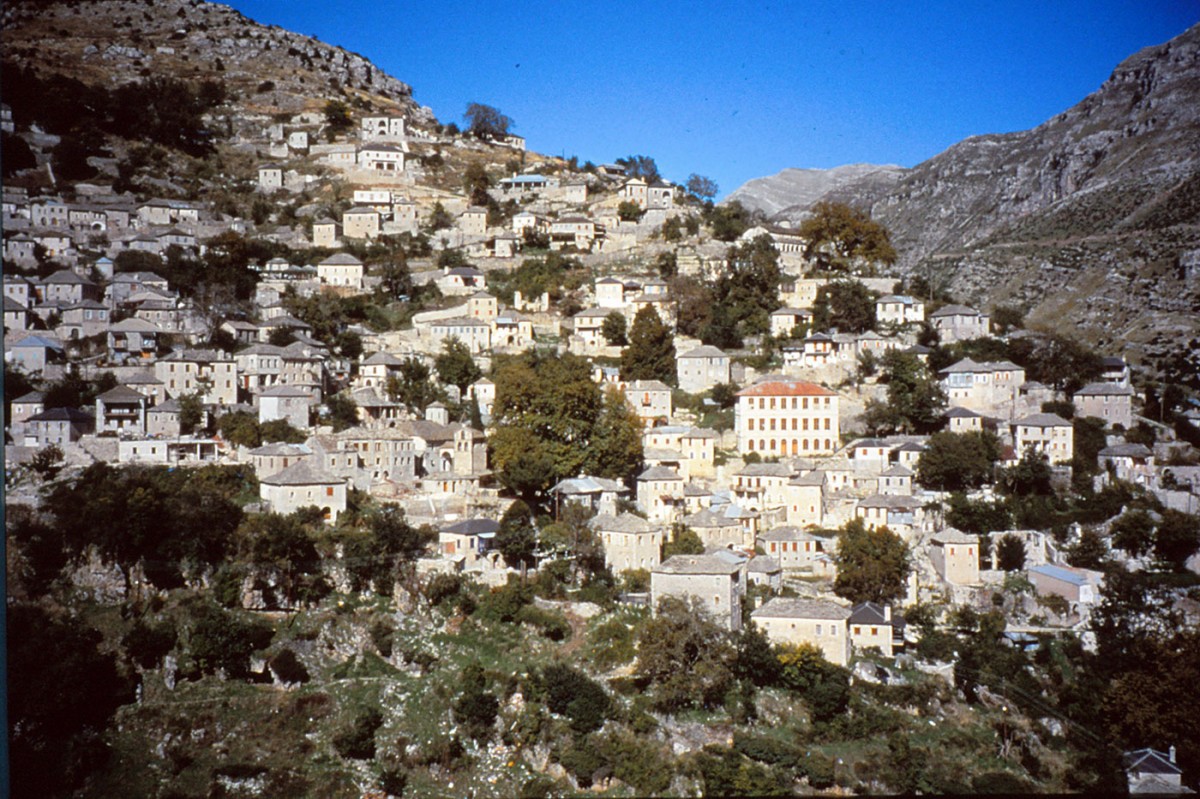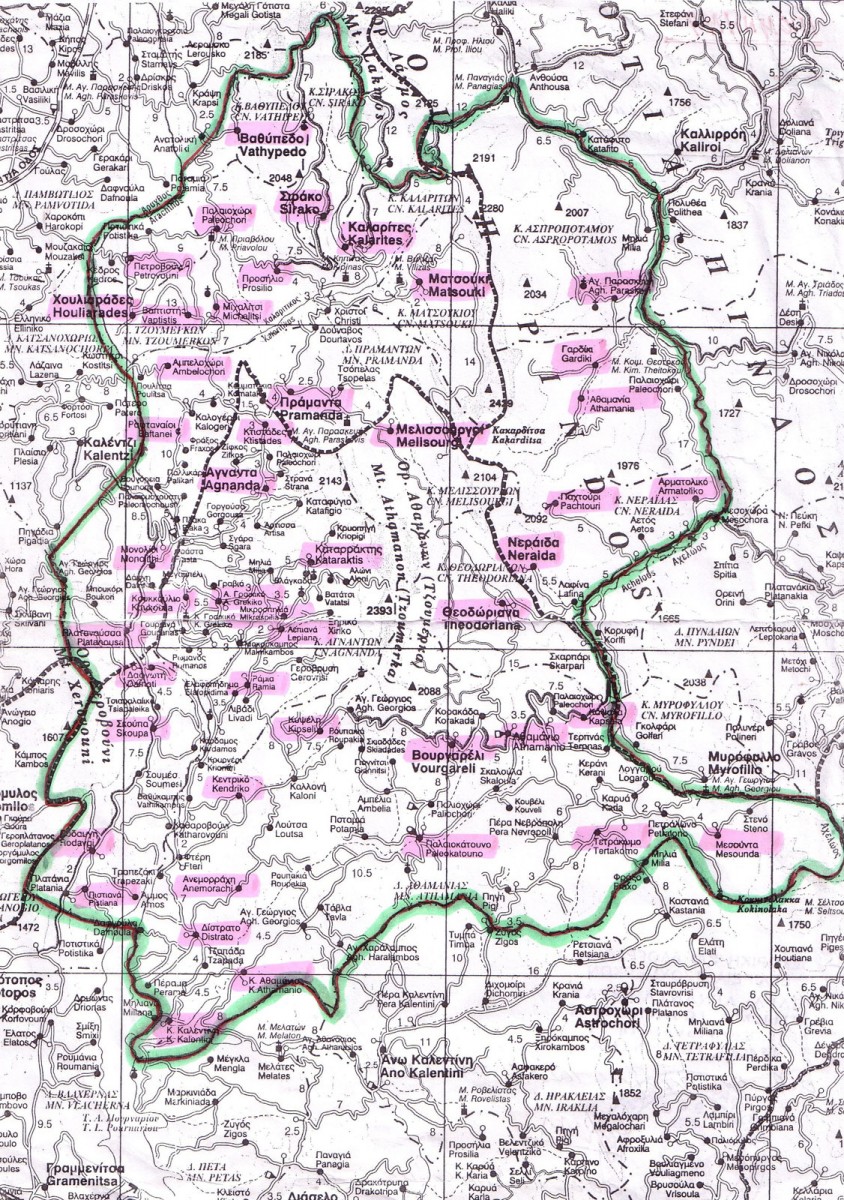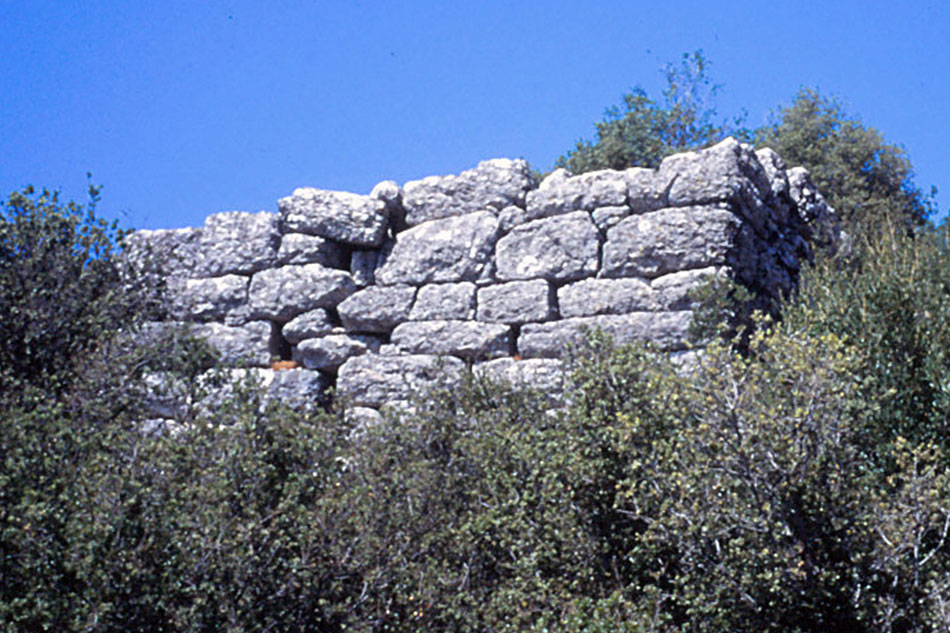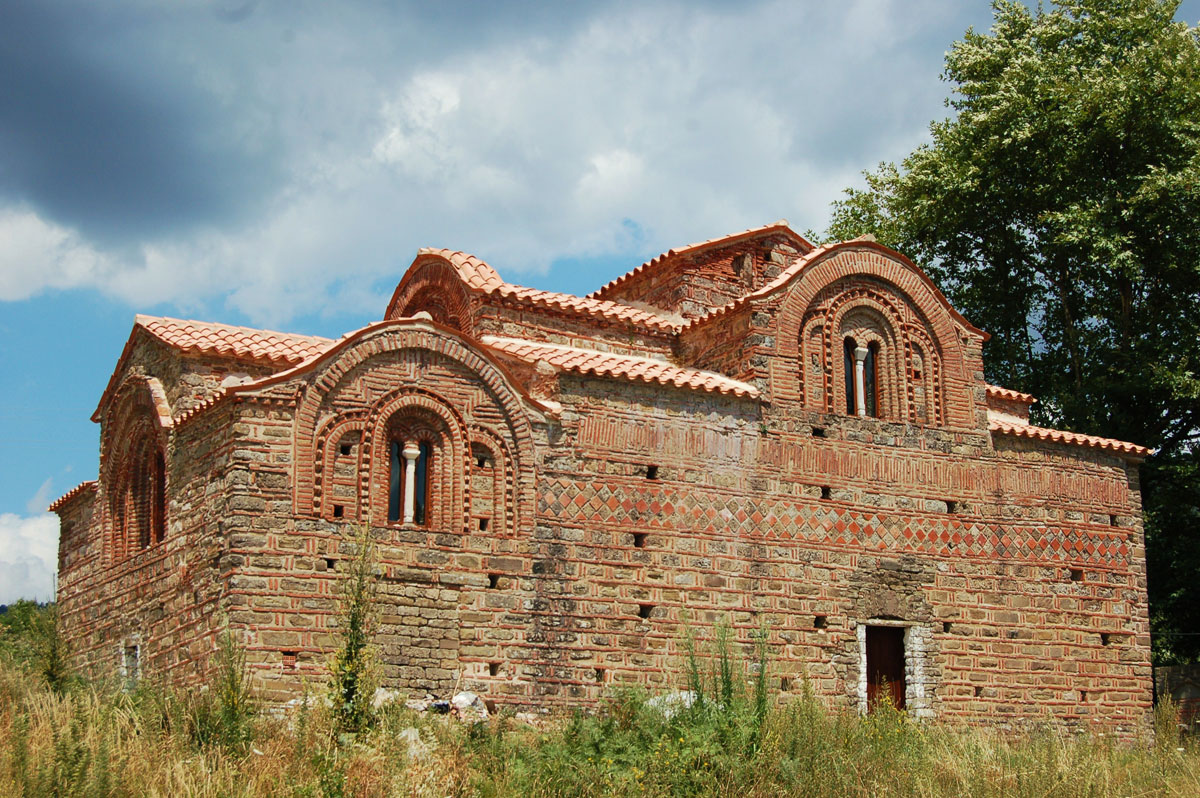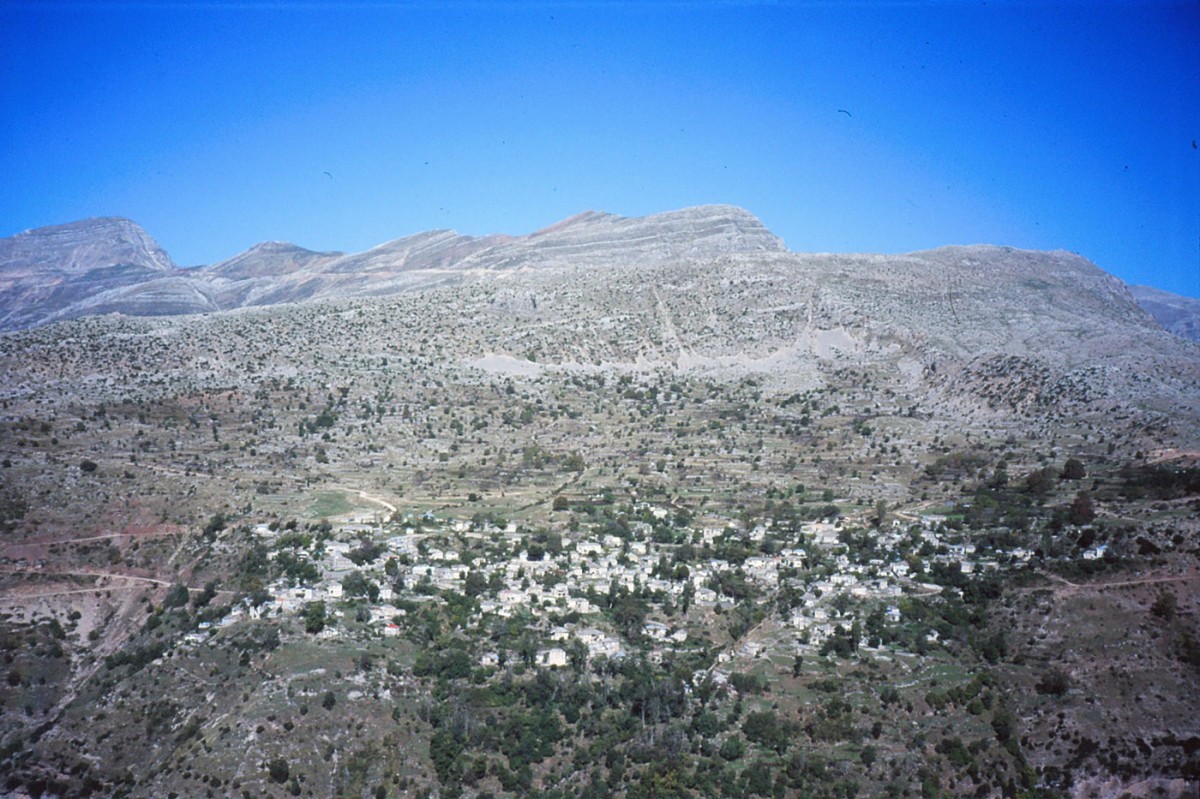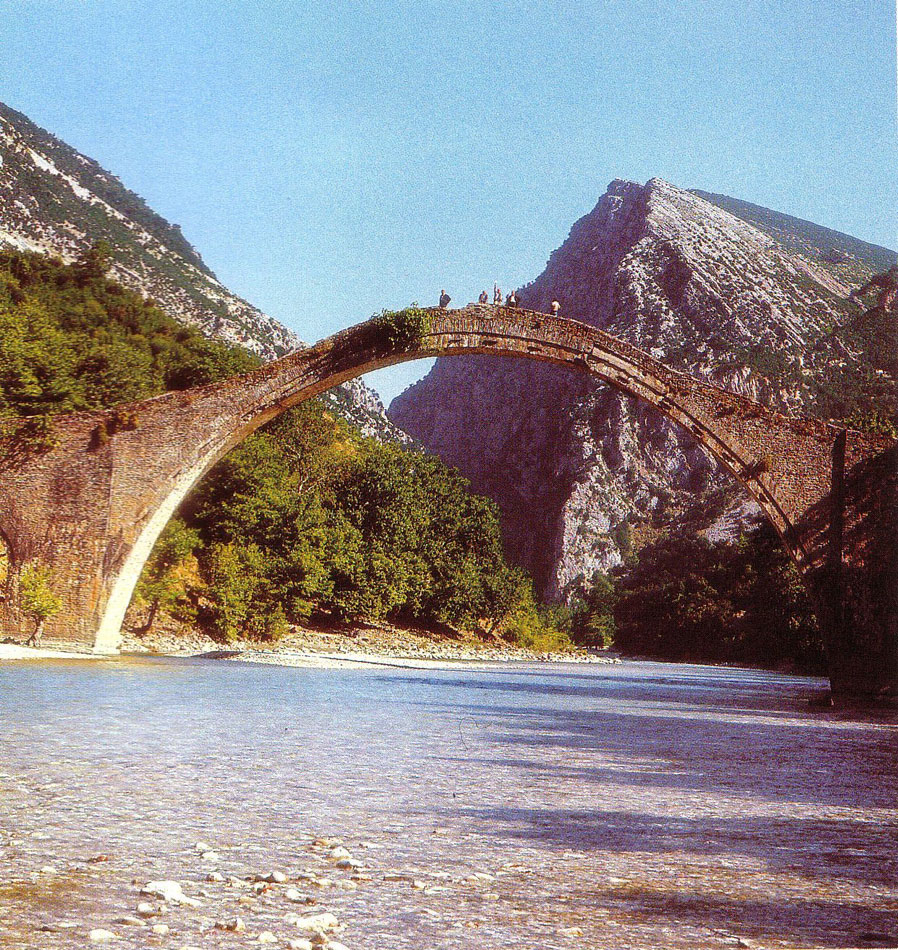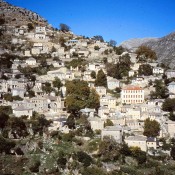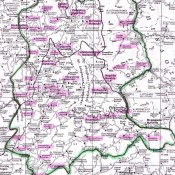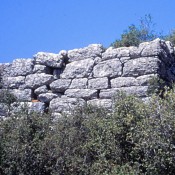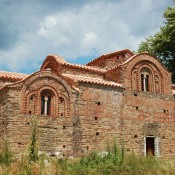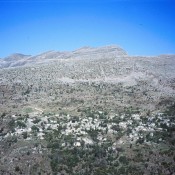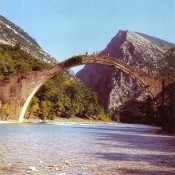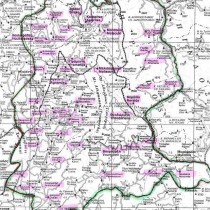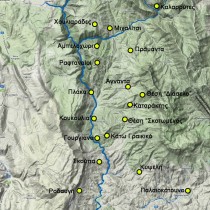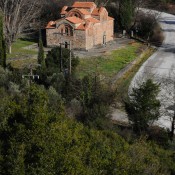The Tzoumerka region’s journey through time lasted many centuries and was very troubled. The Athaman race (note 1) settles in this particular area in the Bronze Age, specifically in 2000 B.C. when the first Greek speaking tribes arrived in Epirus (note 2). The region was named after this tribe and so from that time it was known as Athamania.
Literary sources confirm the arrival of the tribe of the Athamans with the rest of the Greek speaking tribes and its settlement in the region mentioned above (note 3). The lack, however, of a systematic archaeological survey (note 4) constitutes a draw back in the study of its course and its activity both in the prehistoric era and in classical antiquity up to the start of the 4th c. B.C. (note 5). Unfortunately the scant data both from written sources and sparse archaeological finds prove that Athamania was inhabited by a Greek agricultural tribe which, due to its geographic isolation and difficulties in survival, remained in primitive conditions compared to southern Greece (note 6).
The turn of the fourth century is the starting point for the general political organization of Epirus modelled on southern Greece, as well as for its cultural development and the active participation of its various city states in Greek affairs (note 7). It is then that the Athamans make their appearance. More specifically, without either their organization in politics being known or the time of their kingdom’s formation, they forcefully participate in the great political and military events of southern Greece (note 8). At the start of the 3rd c. B.C. Pyrrhus, valuing their region’s key location, annexed them to his kingdom and they followed him on his campaigns (note 9). After his death and the collapse of his kingdom, the Athamans were to be members of the Alliance of Epirots (note 10).
At the end of the 3rd and the start of the first half of the 2nd c. B.C. until the Roman conquest of Epirus, Athamania, an independent kingdom by now, will find itself in the midst of military and political developments and will become a protagonist (note 11), due mainly to the personality of Amynander, its charismatic and dynamic king.
After the Roman conquest in 167 B.C., Athamania, like the rest of Epirus, will be destroyed and abandoned. Its inhabitants will be transported, as was a common Roman tactic, to regions in the plains, on the coast and to big urban centres. As a whole, all through the period of Roman rule, the mountainous, barren, isolated and almost deserted region of Athamania will follow the decline and the overall course of the rest of Epirus (note 12).
Over the Byzantine period that follows, the region will initially belong administratively to the province of Old Epirus and later to the theme of Nikopolis. It will experience repeated barbaric raids, perhaps with not such force as in the more accessible parts of Epirus, particularly in the urban centres of late antiquity. Moreover, it will experience pillaging, the conquest by the Slavs, the temporary Bulgarian occupation, while after 1204 it will become part of the Independent State of Epirus.
Overall, we can assume that the course of Athamania is identical to that of the rest of Epirus. However, we shall have to restrict ourselves to generalizations and assumptions regarding its location and its course within the framework of the Byzantine Empire. This is due to research on this period still being at a preliminary phase, while existing data is scarce and has only general information to offer.
More specifically, there is no data and evidence on its fluctuating populations, the locations and types of its settlements, possible military expeditions and its overall economic, political and social structure. Nevertheless, the area of Athamania can be considered as a crossing/pass of military importance, joining Epirus to Thessaly and controlling a section of the inland road network. The significance of this had already been perceived since classical antiquity as Athamania had often been claimed by various tribes (note 13).
It is sensible to assume that Athamania continued to keep its prominent position secured by its location, given that, within the empire, there was no significant change in the need of Epirus to communicate with the regions sharing common borders. It therefore functioned as one of the main passages to Thessaly, a region with which Epirus had both a special relationship and a common historical course.
Its importance increased during the period of the “Despotate”, as Athamania is not that far from its capital of Arta. Moreover, the main road artery passed through it, joining Arta with Trikala and Epirus with Thessaly. Thus Athamania, the mountainous and isolated but strategically important pass of the Byzantine Empire finds itself, in the time of the Independent State of Epirus, flanking its capital and securing part of its communication by land. Its prominence is no longer hypothetical. On the contrary, it is proved by the founding in its area of the Red Church of Voulgareli accompanied by the corresponding church of Porta Panaghia in Pyle near Trikala (note 14). In other words, the two monuments are situated near the two starting points of the road artery which is also defined by them.
Additional information on the same period has been extracted from two very important pieces of historical evidence which, however, still cannot be connected with complete certainty to the region of Tzoumerka (note 15). More specifically, in the bibliographical note from the Cromwell 11 Code of 1225 (note 16), one of the manuscripts from Epirus, its writer the reader Michael Papadopoulos reveals, among other information, that he himself was the son of the priest Georgios, originating from the theme of Ioannina and inhabiting the woodlands of Tzemernikos. Similarly in the 1321 golden bull or decree of Emperor Andronikos Palaiologos, whereby privileges were granted both to the newly formed metropolis and to the town of Ioannina, the parish of Tzemernikos is included in the five parishes of the theme of Ioannina. The two sources mentioned above are proof of the region being inhabited during the Post Byzantine period. Moreover, its administrative divisions are revealed, since the term drongos/δρόγγος is used to describe the administration of mountain regions. The corresponding ecclesiastical administration is also brought to light as the region was a parish of the Ioannina theme and came under the Metropolis by that name. The conclusion reached by the above data, combined with the production of manuscripts in the mountainous and inaccessible region of Tzemernikos, is that it was inhabited during the period of the Independent State of Epirus and was considered of strategic importance on account of its key geographical position. Moreover, it was completely incorporated in the structure and administration both of the State and the Church, experiencing, in fact, an era of overall prosperity.
The subsequent period is that of the age old Ottoman rule. Unfortunately for this specific period also we will restrict ourselves mainly to generalizations and hypotheses as again, data is sparse. To be more specific, after the treaty of Ioannina in 1430 and the bloodless surrender of Arta in 1449, the Ottomans tried to conquer the region of Tzoumerka recognizing its key geographic position and its great importance. This was in order to dominate over a wider territory and avoid any revolutionary movements which this area could harbour because of its mountainous, inaccessible geomorphology.
Nevertheless, the inhabitants, as in other parts of the country such as Eastern Zagori and parts of the region of Malakasio, did not immediately surrender but continued to resist. Finally, in 1478 they will be obliged to capitulate, acquiring, however, a privileged semi independent status and the right to self government, with particularly favourable conditions. Moreover, certain villages such as Kalarrytes and Syrrako were placed under the protection of the queenmother Valide Sultana, owing to their strategic position (note 17), since they controlled the Pindos passes. This resulted in their being specially treated. So Tzoumerka will not experience the arbitrary violence of the Ottoman conqueror as do other regions of Epirus (note 18). On the contrary and because of the relative autonomy they enjoyed, they will become a refuge for many suffering Greeks who deserted their homes in the plains and attempted to settle in mountainous inaccessible regions.
The privileges and relative peace will be preserved till the beginning of the 17th century. Of course, they had gradually started to decrease and to be violated (note 19). Nevertheless, owing to the failed revolutionary movement of 1611 by Dionysus Philosophos in Ioannina, all the privileges were banned as well as the favourable treatment of many regions in Epirus (note 20). Since that time, the burden of slavery weighed heavily on the villages of the Tzoumerka region, as in the rest of Epirus, while periods of calm and prosperity were followed by raids, robberies, pillaging, arbitrary acts, heavy taxation, forced conversions to Islam and the seizing of children.
At the end of the 17th c. and specifically after the treaty of Karlowic in 1699 (note 21), Tzoumerka will experience its heyday with the population increasing considerably, mainly through the settling of inhabitants from surrounding areas, by new villages being founded, the destroyed ones rebuilt and overall construction activities taking place throughout the country.
During the 18th century and till Ali Pasha came to the throne of the Pashalic of Epirus in 1788, besides a continuing development and prosperity in the region, a marked mobility is also noticed of well organized armed groups (note 22) who follow developments and are ready for a revolt. Naturally, their activities are noticed by the rulers. Consequently, given the slightest cause, the latter frequently intervene by terrorizing, suppressing and torturing the locals. Therefore, peace, quiet and general development are interrupted by pillages, arbitrary acts, arson, slaughter et al.
Between 1788 and 1822 when Epirus was governed by Ali Pasha, the villages of Tzoumerka will develop even more, both in terms of their population and financially (note 23). This was the result of his state being well governed and organized bringing about overall calm, development and prosperity and also because of the particular attention paid to the region as a whole, due to its key geographic position as a passage to Thessaly (note 24).
At the same time, Tzoumerka felt, increasingly, the harshness of the satrap of Epirus which was in a state of constant revolutionary upheaval and a refuge for armed groups who often defied Ali’s power (note 25). Consequently, there were frequent exceptionally harsh reprisals so as to restore order and keep control.
Already by 1818, news of the Filike Etairia (Society of Friends) had reached Arta and a number of Tzoumerkiotes were to be initiated (note 26). Approaching the eve of the 1821 revolution, there is an accumulation of testimonials and information on the region since the villages and their inhabitants participated in the struggle for national liberation to a remarkably important degree, given the circumstances (note 27).
To be more specific, while the initiation to the Society of Friends continued, groups of armed men organized themselves more systematically, contacted the captains and other similar groups and were in a constant state of readiness. Finally on the 15th May 1821 the revolution will be formally declared at the monastery of St George at Voulgareli. Henceforth the regions of Tzoumerka and Radovizi that shared common boundaries are in a constant state of turmoil. Several harsh battles take place on their soil and many villages are subjected to enemy reprisals such as pillaging and various catastrophes or are burnt to the ground and wiped out as are, for example, the villages of Agnadas, Syrrako and Kalarrytes.
After the end of the revolution and the founding of the first Greek State, the region of Tzoumerka and the rest of Epirus was not included, despite their contribution and sacrifices to the war efforts. It remained instead under Ottoman rule. The thirst for freedom, however, and the strong wish to be annexed to the newly formed Greek State, lead this time to a series of fresh local revolutionary uprisings (note 28). The battles waged were tough and bloody while again the villages will be subjected to the enemy’s reprisals.
As a result however of both these continued struggles and of diplomacy, Tzoumerka was annexed to the Greek State in 1881 along with parts of Thessaly and Arta (note 29). Peace will not return to the region even after this great goal had been reached. On the contrary, the region will follow the troubled course of Modern Greece (note 30) participating in large scale military events and continuing to be, till modern times, the cradle of fighters and resistance to each successive conqueror.
Konstantina Zidrou
Archaeologist,
Holder of a Postgraduate Degree in Byzantine Archaeology and Art from the University of Ioannina. Candidate for a Doctorate in Archaeology from the same University
